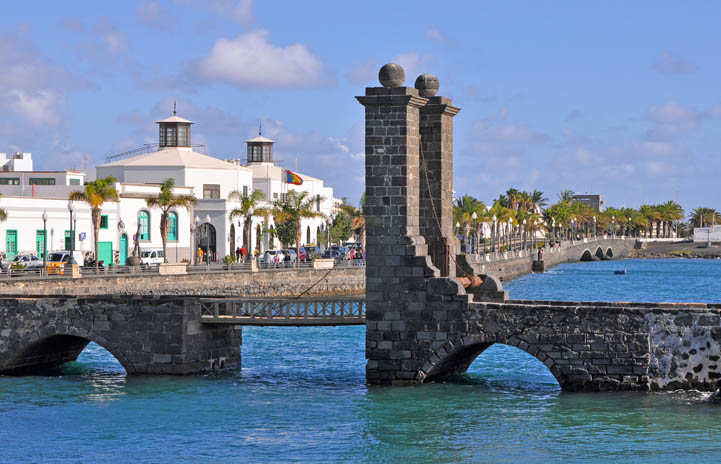 The name of the capital of Lanzarote comes from the fragments of reef emerging here and there off its shores (reef), which in the past protected the inhabitants against pirate attacks, Arrecife is not a large metropolis - it is true that over a third of the island's inhabitants live here, however, it is only 56 thousand.
The name of the capital of Lanzarote comes from the fragments of reef emerging here and there off its shores (reef), which in the past protected the inhabitants against pirate attacks, Arrecife is not a large metropolis - it is true that over a third of the island's inhabitants live here, however, it is only 56 thousand.
You should start your exploration of the city near the Charco de San Gines lagoon – the oldest part of the city, where even before the conquest was the Guanche settlement, then a fishing village. Thanks to Cesar Manrique's intervention, the lagoon area has retained its traditional character. White houses and fishing boats anchored in the lagoon are quite surreal, but also an extremely pleasant sight, something like Notting Hill in London. Near the lagoon, on the Plaza de las Palmas stands the church of St.. Genesius, patron Arrecife – Church of San Gines. The original building from the 16th century. it was completely destroyed by the flood. In her place, St. 1667 r. a church was erected, which has been rebuilt many times over the course of history (the church was enlarged in 1747, 1798, 1800 i 1804 r., a w 1842 r. bell tower added). After sightseeing, you can take a walk along the main shopping promenade – c / León y Castillo, where several tenement houses with characteristic wooden balconies and the elegant building of the first town hall with 1739 r. (decorated with yellow tiles). On the c / León y Castillo south, after a few minutes you reach the seaside promenade, from where you can see the stone Puente de las Bolas, leading to the defensive Castillo de San Gabriel on a small island, in which the Archaeological Museum is located. The 18th-century fortress and the bridge designed by the Italian Leonardo Torriani replaced the stronghold of 1573 r. Worth a walk at the end of Muelle Chico, from which you can see the panorama of the city.
You can continue your visit to Arrecife while walking along the seaside promenade. Passing through the Parque Jose Ramirez Cerda, it is worth paying attention to the wooden reconstruction of Kiosco de Musica; the city's tourist information office is located inside. Every Wednesday between 9.00 a 15.00 there is a handicraft market in the park, to 11.00 you can listen to traditional music in the gazebo surrounded by stalls. Right next to the park, at Avda. Coli 3 stoi House of the Streams – the first two-story building erected in Arrecife. House with 1793 r. is an excellent example of a typical Canarian urban development.
Continuing the walk along the promenade, you walk past the nautical club building, behind which there is a small Parque Islas Canarias and the only skyscraper in Lanzarote - fourteen-story Gran Hotel.
The modern hotel is admittedly not a historical monument, however, it is an excellent vantage point, that's why it's worth going inside and taking the elevator to the pub on the top floor of the glass tower, where you can admire the panorama of the city and the island with a cup of coffee. After leaving the hotel, it is worth visiting the small one, surrounded by the Islote de Fermina reef, called the Island of Love (access via an asphalt road behind the hotel). Work has been underway for several years, to develop it according to the design of Cesar Manria, who wanted to create a swimming pool and a sunbathing area here. From Islote de Fermina, the 450-meter-high Playa del Reducto and Parque Tematico at its southern end are beautifully visible. The promenade starting at the park is less than a walk away 10 km Puerto del Carmen. Aviation enthusiasts should go for such a walk – the promenade runs right next to the airport, so you can admire the landing and taking off planes.